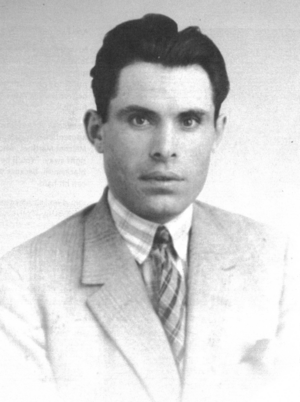Anarchist insurrection of Alt Llobregat facts for kids

Location of Alt Llobregat in Catalunya
|
|
| Native name | Revolta de l'Alt Llobregat |
|---|---|
| Date | 19–27 January 1932 |
| Location | Alt Llobregat, |
| Also known as | Anarchist insurrection of Alt Llobregat |
| Type | General strike |
| Cause | Economic inequality |
| Motive | Libertarian communism |
| Participants | CNT |
The Anarchist insurrection of Alt Llobregat was a big workers' strike in Spain. It happened in January 1932. This strike was mainly organized by unions from the Confederación Nacional del Trabajo (CNT). These unions were active in the mining and textile industries. This event was the first of three major uprisings led by the CNT during the time of the Second Spanish Republic. The other two happened later in January and December of 1933.
Contents
History of the Alt Llobregat Uprising
Why the Strike Started
The strike began because of tough economic times in the area and across Spain. Many workers hoped for big social changes during the early days of the Republic. In Catalonia, the most radical groups of anarchists were in charge of the CNT. This led to more disagreements between workers and the government.
The revolt started on January 19, 1932. Miners in the San Cornelio industrial area in Fígols began to strike. They took weapons from the local police-like group called the somatén. Then they started patrolling the streets. Some workers even announced "libertarian communism." This idea means a society where there are no bosses or government, and everyone shares everything.
The miners were upset about their difficult working conditions. They worked long hours in the mines, and it wasn't safe. Also, the new Spanish Constitution of 1931 had just given people new rights to gather and form groups. This made workers feel more hopeful about making changes.
How the Revolt Spread
The next day, the conflict quickly spread to other towns in Alt Llobregat. These included Berga, Sallent, Cardona, Balsareny, Navarclés, and Súria. In these towns, strikers stopped the mines and closed shops. In Manresa, groups of workers blocked access to factories. Telephone lines were cut so people couldn't communicate easily. In many places, the usual republican flags were replaced by the red and black flags of the CNT. These flags are symbols of anarchism.
On that same day, a leader from the CNT's regional group spoke in Fígols. He stood in front of the revolutionary committee formed by the miners. He announced that "libertarian communism had arrived." This news quickly spread throughout the entire area.
Government Response and End of the Revolt
The day after, on January 21, Manuel Azaña, who was a key government leader, spoke to the Spanish parliament. He said he wasn't scared of strikes because they were a legal right. But he also said that no one could rebel against the Republic. He made it clear that the military had to step in if things went too far.
The government ordered the army to get involved. So, on January 22, the first military groups arrived in Manresa. By the next day, they had taken control of all the towns in the area, except Fígols. The miners in Fígols had blown up a place where explosives were stored and then escaped into the mountains. The government took back control, and the miners who had gone on strike lost their jobs.
On January 23, Fígols was the only town still controlled by the rebels. The CNT's national leaders decided to "order all of Spain to stop working." However, only a few towns in Valencia and Aragon followed their lead. For example, in Alcorisa, rebels placed bombs at the Civil Guard police station. In Castel de Cabra, rioters took over the town hall and destroyed important papers.
Soldiers were sent from Barcelona to stop the riots. On January 24, Fígols was taken back by the government. By January 27, this first anarchist uprising against the Republic had ended.
Aftermath of the Uprising
Many people were arrested after the revolt. All CNT centers in the affected areas were closed down. The government decided to send about a hundred of the arrested people to colonies in Africa. These places included Morocco, Western Sahara, and Guinea.
On January 22, when troops took over Manresa, several anarchist activists were arrested in Barcelona. Among them were the brothers Francisco Ascaso and Domingo Ascaso, and Buenaventura Durruti. They were taken to a ship called "Buenos Aires" in the port, ready to be sent away. Four days later, there were over 200 arrested people on the ship.
On January 28, about a hundred of these prisoners started a hunger strike to protest. They also wrote a statement saying they had no way to defend themselves. Some were eventually released. But on February 10, the "Buenos Aires" left Barcelona with 104 prisoners. After picking up more prisoners in Cádiz, the ship sailed past the Canary Islands and finally arrived at Villa Cisneros on April 3. Some prisoners got sick on the journey, and one person died. Others were released along the way. The last prisoners returned to Spain in September.
This large-scale deportation made the disagreements between the CNT and the government even worse. The uprising also caused a split within the CNT itself. Some members, like Ángel Pestaña, believed in working with the government. Others, the anarchists, wanted to keep fighting for a society without government. Pestaña and his supporters were eventually kicked out of the CNT. They then formed a new group called the Syndicalist Party, hoping to take part in politics.
See also
 In Spanish: Insurrección anarquista del Alto Llobregat para niños
In Spanish: Insurrección anarquista del Alto Llobregat para niños
- Revolutionary Catalunya


